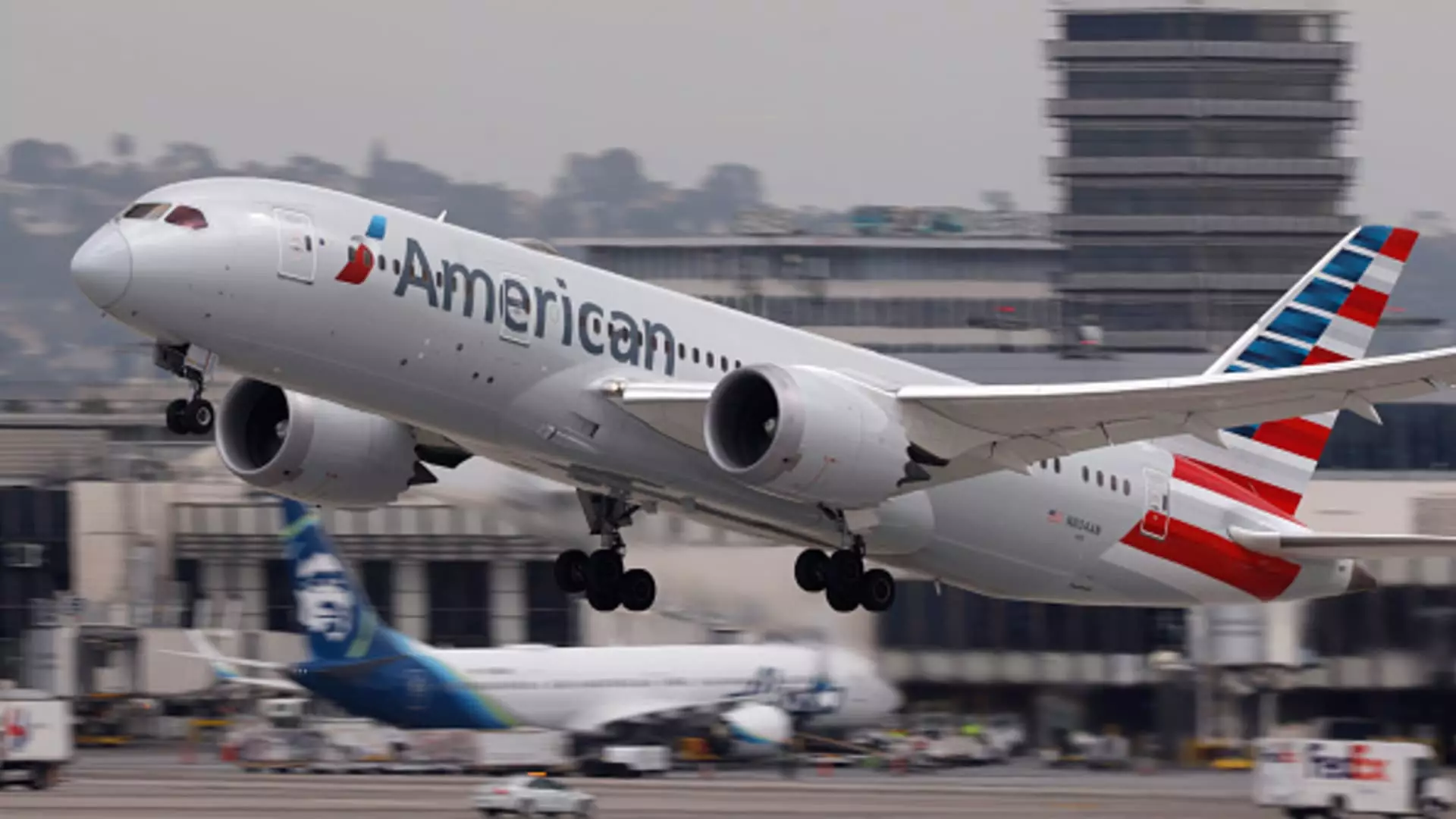American Airlines recently experienced a minor upheaval in the financial markets following the release of its first-quarter earnings outlook, which proved to be underwhelming compared to analysts’ predictions. The airline projected a loss per share ranging from 20 to 40 cents for the first quarter of 2025, a stark deviation from the anticipated loss of only 4 cents. Consequently, this forecast resulted in a significant decline of over 7% in the airline’s stock prices during early trading. This disappointing projection not only highlights the unique challenges faced by American Airlines but also raises questions regarding its operational strategies and market positioning.
In analyzing the factors contributing to this projection, it becomes apparent that rising unit costs are a primary concern. American Airlines forecasts that its unit costs, excluding fuel, will increase at a low-single-digit percentage over the first quarter of 2024. This rise is attributed largely to a reduction in capacity expected to decrease by as much as 2% compared to the previous year. Furthermore, the shift towards a higher proportion of smaller regional jets further complicates its financial outlook. Coupled with recently finalized labor agreements, these elements suggest that American may be wrestling with cost constraints while trying to maintain service quality.
This scenario stands in contrast to the more optimistic earnings outlooks provided by competitors such as Delta and United Airlines, which recently reported more favorable projections. While American’s full-year earnings forecast, estimated between $1.70 and $2.70, aligns with industry expectations, the immediate challenges faced in the first quarter cannot be overlooked.
Over the past year, American Airlines has focused on addressing the fallout from a controversial approach to business travel sales that emphasized direct bookings, eschewing traditional travel agencies. This strategy proved detrimental, with the airline attributing a $1.5 billion revenue loss in 2024 to its ill-fated plan. The decision to abandon this strategy signifies a willingness to adapt and learn from previous mistakes, an essential quality for any organization seeking longevity in a competitive marketplace. Additionally, American Airlines secured a new credit card deal with Citi, which presents an opportunity for revenue enhancement. The increase of 17% in compensation from partnerships with both Citi and Barclays underscores a rebound in revenue-generating potential.
Despite the prevailing uncertainties, American’s forecasts indicate some optimism. The airline expects revenue to rise between 3% and 5% in the first quarter as compared to the same period in 2024, and anticipates up to a 7.5% increase in revenue for the entire year relative to 2024. These projections signal a recognition of the underlying demand in air travel, especially as business and recreational travel continue to show signs of recovery.
The reported fourth-quarter performance also reinforces this cautious optimism. American Airlines recorded a notable profit increase, surging from a mere $19 million to $590 million, propelled by a 4.6% increase in sales. This strong performance, which exceeded Wall Street estimates, indicates that despite operational setbacks, the airline has the potential to recover when managed appropriately.
Looking ahead, the chief executive officer of American Airlines, Robert Isom, exudes confidence in the firm’s positioning within the airline sector. He emphasizes the company’s robust network, loyalty programs, co-branding initiatives with credit card partners, and operational reliability, suggesting that these elements will be pivotal in navigating the challenges ahead. However, the disparities between American Airlines and its competitors, coupled with rising operational costs, highlight a critical need for strategic oversight.
As American Airlines attempts to navigate this transition, its management must remain vigilant in pursuing operational excellence while being adaptable to market changes. In an industry marked by unpredictability and fierce competition, how American responds to these internal and external pressures will shape not only its financial outlook but also its long-term viability in the dynamic aviation market.


Leave a Reply